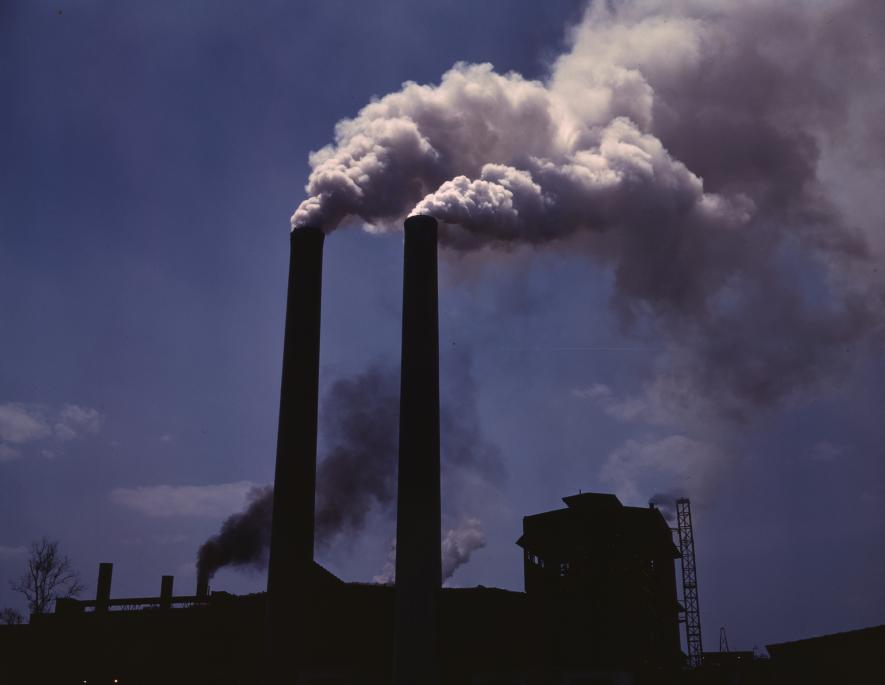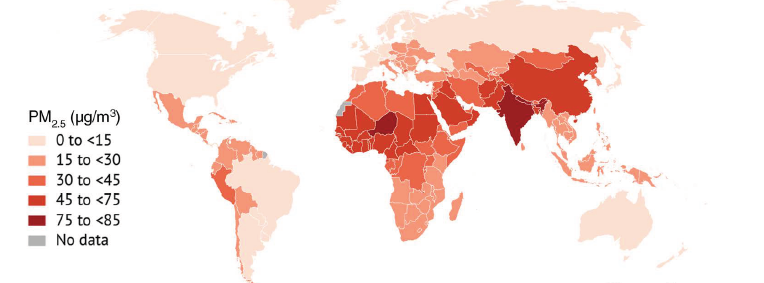Global Air Pollution Report Says PM 2.5 and Ozone Concentration Continue to Rise in India

Image Courtesy: Wikipedia
A global study on the state of air pollution paints a poor picture of India’s current tryst with particulate matter all around us, with an increase in PM 2.5 levels and ozone concentration. The saving grace is that household air pollution has registered a significant drop in the country over the past decade.
The 28-page report itself, titled State of Global Air 2020 is produced yearly by the Health Effects Institute and the Institute for Health Metrics and Evaluation’s (IHME’s) Global Burden of Disease (GBD) project.
The recent report – which deals primarily with 2019 data – also accounted for the effect of pollution on children. The GBD estimated that about 4,76,000 infants across the world succumbed due to exposure to air pollution in 2019. “Infants born in sub-Saharan Africa and South Asia (the Indian subcontinent) have the highest rates of neonatal death attributable to air pollution, from 9,000 to 13,100 per 100,000 live births,” the report mentioned.
In 2019, the SoGA report found, over 90% of people across the world were exposed to “annual average PM2.5 concentrations that exceeded the WHO Air Quality Guideline of 10 μg/m3. The highest annual average exposures were seen in Asia, Africa, and the Middle East.”
The “good news” is that 14 out of the 20-most populous countries of the world did experience a drop in PM 2.5 levels last year, however, “countries with some of the highest exposures in the world — India, Pakistan, and Bangladesh — continue to see increases,” the report added.

Source: State of Global Air 2020
The state of Ozone concentration, which is debilitating to humans as well as food crops, also is a cause for concern. While countries like Ethiopia registered a “steep” 27% increase, “India, Pakistan, and Bangladesh — have also seen some of the greatest increases. India, for example, experienced an increase of about 17% — from 56.5 ppb (95% UI: 56.3 to 56.6) in 2010 to 66.2 ppb (95% UI: 66.0 to 66.3) in 2019.” (ppb- parts per billion)
However, the one metric where India did redeem itself was household air pollution. “China reduced the percentage of its population exposed to household air pollution from 54% to 36%, while India reduced its percentage from 73% to 61% over the decade,” the report noted.
In 2019, air pollution is estimated to have been a major factor behind approximately 6.67 million deaths across the globe, close to 12% of the total deaths worldwide. “Air pollution is the leading environmental risk factor for early death, with its total impact exceeded only by high blood pressure, tobacco use and dietary risks,” the report noted.
Long-term exposure to PM 2.5 particulate matter accounted for about 4.14 million deaths out of the aforementioned number, with 62% of all deaths under air pollution claimed by PM 2.5. India has one of the highest death rates due to PM 2.5, with 96 deaths per 1,00,000 people due to it, the report said. While China is at 81 deaths, countries like Germany (13), the US (8.5), Canada (5.4) and Norway (3.8) rank far lower.
“Globally, the PM 2.5-attributable mortality burden continues to be dominated by the most populous countries in the world — China, which saw 1.42 million PM 2.5-attributable deaths and India, which saw 9,80,000 PM 2.5-attributable deaths. Together, these two countries account for 58% of worldwide deaths attributed to PM 2.5 in 2019,” the report mentioned.
In terms of deaths attributed to ozone concentrations, India registered an 84% increase as well, with over 76,000 such deaths.
The study also factored in the effect COVID-19 had on air pollution, saying that closed down factories and no cars on the streets only offered “temporary respite”.
Get the latest reports & analysis with people's perspective on Protests, movements & deep analytical videos, discussions of the current affairs in your Telegram app. Subscribe to NewsClick's Telegram channel & get Real-Time updates on stories, as they get published on our website.
























